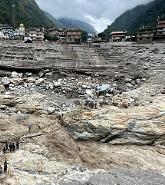I readily admit that lists of top risks, top threats, and opportunities for insurance are well-trodden ground, and ranking risks in order of importance inevitably triggers debate about which risk should be near the top or bottom, rather than the actual risks on the list.
And from an insurer’s perspective looking down a typical list of risks, some will be dismissed as too far in the future that they can be ignored, or too obvious that they have already been considered and evaluated.
At this year’s Exceedance conference, our theme is to help attendees to ‘See Risk Differently.’ We know the current risk landscape and the state of the insurance industry do not represent business as usual.
But what risks are driving these changes in the landscape, are insurers looking at the right factors, what factors are closer to reality, and what looks more like a hallucination?
Insurers have to consider so many questions. Here’s just one – how will infrastructure that was designed before we knew our climate would change, cope under new extreme pressures, such as the dam failures in Libya and India?
Another question, what’s next for life insurers after the major global catastrophe of a global pandemic not seen since 1918?
Risk is changing, and the business environment is changing. Supply chain shocks, the overhang of the pandemic, and geopolitical risk have escalated economic issues that have been fairly benign in many countries, driving inflation, wages, and raw material price rises, with insurers reaching for an inflationary business playbook that they haven’t used for 20-30 years.
Insurance is a business, and relies on its customers – be they homeowners, life policyholders, or businesses.
Customers face the same risk and economic pressures, but for some, as climate peril risk rises along with losses, insurers have looked to pass premium increases or tighten coverage – with customer satisfaction falling and six million uninsured homes in the U.S.
More customers want cyber insurance, but insurers looking to capitalize on growth have to navigate a volatile risk landscape.
Having a conference theme ‘See Risk Differently’ means we need to show customers how, through better data and better models we can identify new business opportunities.
As part of our preparation for Exceedance 2024, we set ourselves this challenge – 10 risks (in no particular order) that represent some of the major risks shaping insurance today.
These risks are affecting all businesses, the business of risk itself, and the state of the risk landscape. Where to start?

Emerging Risks

Across all business sectors and all regions, as the world’s reliance on the internet reaches new heights, cyber has become one of the most ubiquitous and prevalent of all the perils that organizations must face, with the potential to stop operations at any time.
With an ever-changing risk landscape, and ever-changing threats, organizations see their cyber defenses tried 24/7, in a battle to close down vulnerabilities looking to be exploited by a wide range of threat actors, from lone hackers, and organized crime operations, to state-backed attackers.
Cyberattacks are now just ubiquitous – an everyday occurrence.
The challenge for insurers is to use frameworks that best capture this peril, as understandably, organizations are looking to their insurers for protection against the worst excesses and losses from cyber risk, and to better manage the risk overall, to make it hard for the criminals perpetrating these attacks.
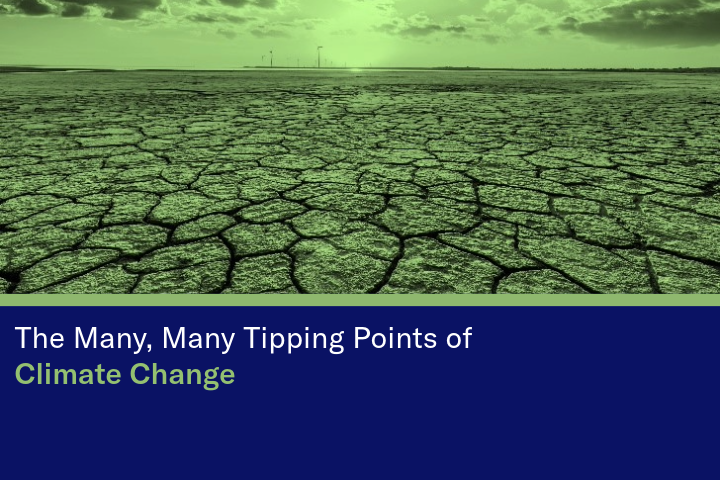
Every day seems to deliver a new potential threat or a ‘what if?’ question concerning climate change, a new ‘tipping point’ that will then accelerate the globe over the 1.5 degree Celsius bound and beyond.
But as with all things, it is much more complex than that, individual factors are signs, such as melting sea ice, but it is climate change feedback loops, as one factor accelerates another, where the risk of reaching a definitive tipping point can arise.
Examining the complex network of feedback loops that can accelerate global warming will prove vital to establish whether we are moving fast toward true tipping points. Any accelerations mean less time to mitigate risk, resulting in increased transition risk due to the urgency to respond – potentially impacting insurers and stakeholders including governments.

Net zero has emerged as the central goal in tackling climate change, but as a measure, it is intrinsically a scientific concept. To keep the rise in global average temperatures within certain limits, physics implies that there is a finite budget of carbon dioxide that is allowed into the atmosphere, alongside other greenhouse gases.
However, net zero is much more than a scientific concept or a technically determined target. It is also a frame of reference through which global action against climate change can be (and is increasingly) structured and understood.
Achieving net zero requires operationalization in varied social, political, and economic spheres.
With such an intricate path to tread to reach net zero, there are risks along the path itself. For instance, carbon capture and storage is widely touted as a route to sequestrate vast quantities of carbon dioxide, but would a sudden release from a ruptured storage facility cause new issues?
New green technology presents many opportunities for insurers to open up new lines of business and look to reduce their exposure to carbon-intensive sectors, but it also presents new risks for the insurance industry.
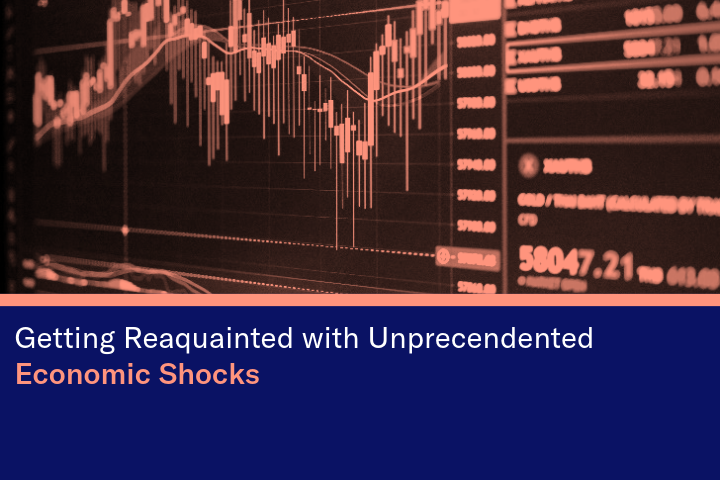
From the mid-1980s to the 2007 crash, the ‘Great Moderation’ provided a period of stability across a range of economic factors; for many developed and emerging economies, growth, inflation, and interest rates stayed at relatively stable levels.
Post-2007 then saw intervention to maintain stability, and low interest rates to stimulate a return to growth. Central banks supported many nations, including unprecedented levels of support to keep economies functioning during the COVID-19 pandemic.
Whereas the economy was fairly benign in terms of concern, such as low and stable interest rates and inflation for developed economies for most of the 2010s, insurers, similar to most businesses, are now coming to terms with an economic environment where shocks are frequent and unpredictable, and these shocks then ripple through in the form of inflation, higher costs, and higher interest rates.
For example, insurers alongside contending with increasing risks from climate-related events, are also having to contend with significant inflationary pressures, rising labor and materials costs for construction, and higher interest costs.
As consumers feel a cost of living squeeze, policies such as life insurance may not be renewed or canceled to save money, driving up lapse rates. Factoring in these issues is a central aspect of business planning, and the need to pivot in response to shocks is now the norm.
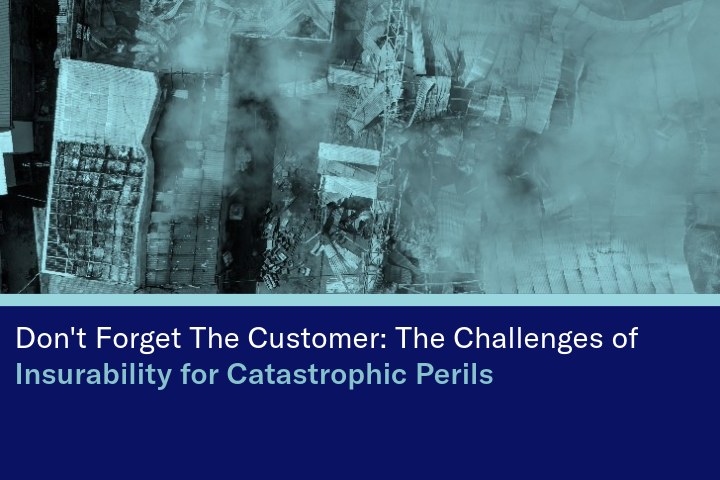
In many U.S. states, and especially states that have suffered significant cat events such as California, Florida, or Louisiana, insurers are having to contend with higher frequency, higher severity cat events, impacting higher value exposure which is located in areas that are becoming higher risk.
In addition, rising business costs, inflation, aggressive litigation, and regulatory pressures, are forcing insurers to reconsider offering coverage to the highest-risk properties.
On the other side, regulators are reacting to this volatile environment, looking to ensure affordable coverage is maintained for consumers. Consumer protection laws such as Prop. 103 in California strains under calls for reform from insurers, to introduce risk-based pricing for perils etc.
But for the consumer, in certain U.S. states, the risk of uninsured properties in towns and cities is growing.
Similar to any other product, insurance costs have to compete with other demands on a consumer’s income, in an economic environment where housing, food, and fuel costs are rising, insurers run the risk of being seen as expensive offering no immediate value for a risk they perceive won’t happen to them.
Insurers need to be viewed as partners in allowing for the economic viability of homeowners, businesses, and the community.
To achieve this, a better understanding of the risk in front of them and efforts needed to mitigate short and long-term risk, allow insurers to be seen as active risk mitigation partners helping consumers to become more resilient and economically stable in the future.
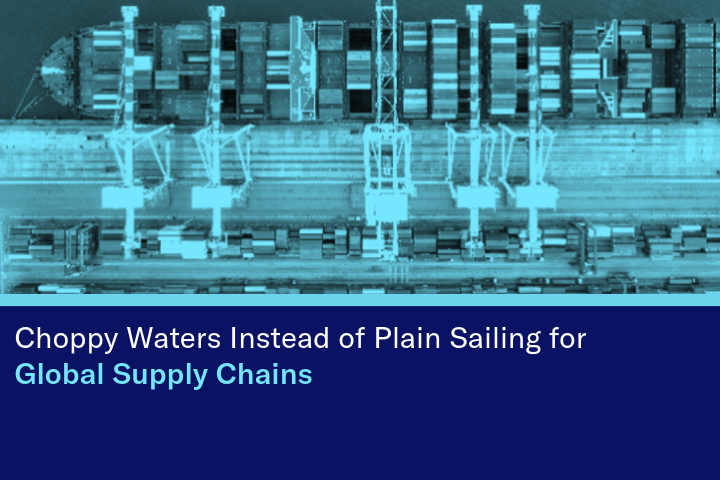
The global supply chain is an intricate interplay of many moving parts, but as seen with the COVID-19 pandemic or Russia’s invasion of Ukraine, the smooth functioning of the global supply chain that the world has enjoyed could be an exception, rather than the rule.
Production shortages during COVID saw whole industries such as car manufacturing, air travel, and tourism, grind to a halt, with a long, stumbling road back to recovery.
Then Russia’s invasion of Ukraine saw shocks to energy prices as Russia’s energy exports were turned away by Ukraine’s allies, and foreign businesses retreated from Russia.
Construction costs – materials and labor, can represent a sizeable slice of a property insurer's costs, and double-digit cost increases have had to be passed through in response to supply shortages, price increases, and rising labor costs in a tight labor market.
Businesses are rapidly relearning how they approach global supply chains, assuming that nothing is certain, and building resilience and contingency into their systems. Identifying the new vulnerabilities in each supply chain, recognizing that the leanest approach may not be the best fit, and that supply continuity is now the best outcome, will help to minimize future supply shocks.
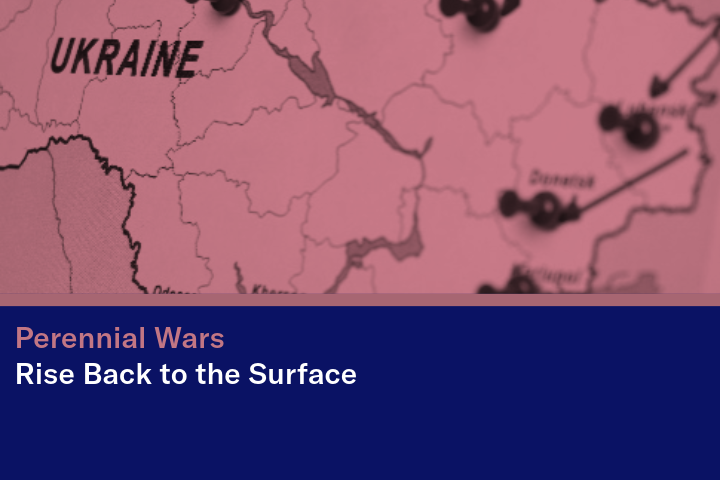
Concern around geopolitical issues, although ever present, had been muted, as globalization and world trade looked to create new partnerships and break down barriers for many businesses over the last 20-30 years.
But with many states now emboldened and looking to flex their new dominance, old ‘perennial’ wars, and new conflicts, have either been brought to the fore, making it more difficult to conduct world trade in a time where conflicts are reigniting with growing regularity.
Insurers have to understand the multitude of geopolitical conflicts, and how many of these are perennial conflicts, they do not go away or get resolved, but they bubble to the surface, and can quickly escalate.
Terrorist events can be a trigger, and ignite conflicts; these perennial disputes can place infrastructure, shipping routes, and resources at risk, potentially writing off business for years.
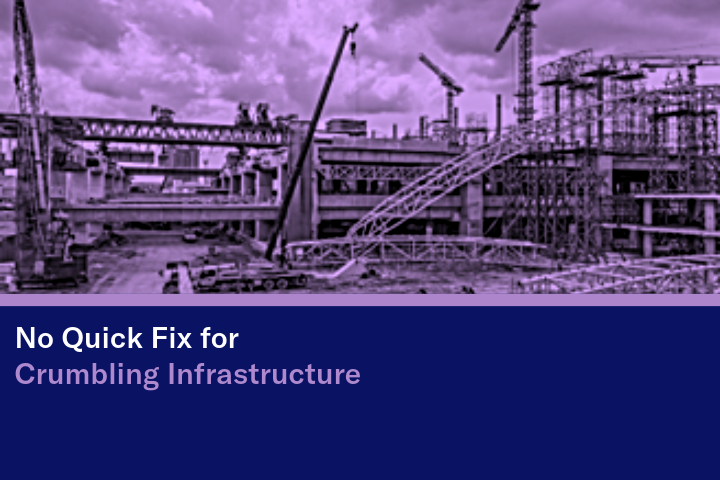
Nations have infrastructure booms, for the U.S., it was 1950-70, after which investment dropped off. As a result, vital infrastructure is predominantly 50-70 years old.
For developing nations, a different issue: by 2050, there will be 15 million miles of paved roads built around the world in total, enough to encircle the globe 600 times, and 90 percent of the road building will occur in developing nations. But is this new infrastructure going to be resilient in the future?
Although a direct issue for the insurer that insures an infrastructure asset, inadequate dams, flood defenses, drainage, power systems, and poor housing – all contribute to escalating risk for insurers who are increasingly paying out for the events exacerbated by poor infrastructure.
This is set to worsen as infrastructure struggles to cope with an environment facing extremes – be it heat, cold, rain, snow, or wind. Where infrastructure fails, businesses that rely on that infrastructure will also be hit, potentially driving up business interruption losses.
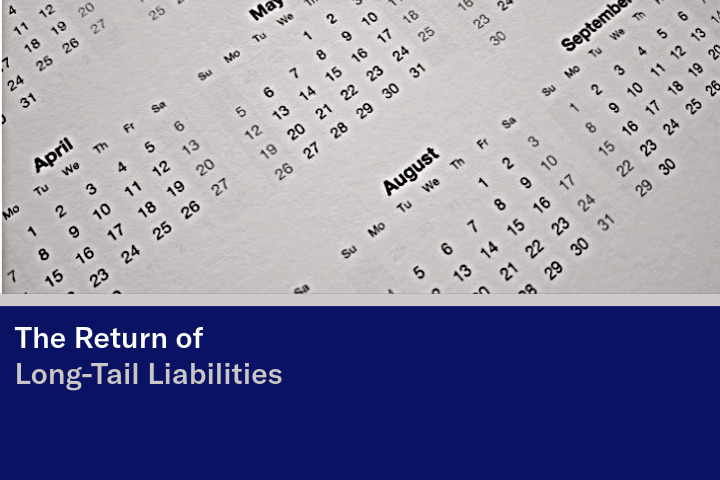
There is a growing need for (re)insurers to be prepared and even ensure reserves for the rise of ‘long-tail’ claims from many potential sources.
Social inflation factors, where awarded losses, higher litigation rates, or simply the backlog of court cases post-COVID seeing legislators extending claim deadlines or adjusting claim eligibility dates allowing more claimants to gain redress, bring uncertainty.
One source is simply where claims come in well after an insurance policy has expired. These have seen a resurgence recently; Munich Re reported a 33 percent year-on-year rise in ‘long-tail’ claims in 2023, with policies dating back as far as 2012.
Changes to the statute of limitations – the maximum time to make a claim can change, such as for molestation claims in the U.S., can reopen liabilities.
Insurance ‘archaeologists’ dig into past policies, such as potential claims navigating ‘Pollution Exclusions’ introduced in the mid-to-late eighties liability and/or property insurance policies. Claims from pollution or liability from per- and poly-fluoroalkyl substances (PFAS) keep the scrutiny on past policies.
Where policy wordings are ambiguous or have not kept up with the rising list of potential claims and attempts at litigation, such as cases ranging from COVID-19 business continuity claims in Europe, faulty products, to data breaches/data protection, long tail liabilities can arise.

From improvements in sanitation, housing, and education, the fight against infections with the development of vaccines and then antibiotics, new technology, pharmaceuticals, and screening, have seen life spans increase to 84-85 years old, on average, in eight countries.
Breakthroughs in transplants, gene therapy, blockbuster drugs that target cancers, and AI speeding up research, will all help to reduce the likelihood of premature death and extend lifespans further. The world already has nearly a million centenarians, around 1,000 at 110 years, and 68 at 115 years or greater.
With the COVID-19 pandemic, the issue of excess deaths came to the fore, with those over 65, and especially over 75 years old, being particularly hard hit, and reversing some of the top-line gains in longevity.
But the focus is now turning to ‘healthy life’ years, years without chronic illness or disability, and this, as an example, for the EU countries is at around 63-64 years. In developed and developing economies, issues around obesity, poor diet, alcohol, drugs, sedentary lifestyles, plus insufficient access to appropriate healthcare, are countering longevity gains, and making it hard to increase ‘healthy life’ years.
This then places pressure on health and social care systems as more people struggle with chronic illness and disability in their later years.
For those delivering life assurance or financial security products to aging populations, the marrying up of exceptional longevity progress, and extraordinary medical breakthroughs, together with the other side of the balance sheet, of emerging viruses and possible pandemics, Long COVID, and lifestyle and healthcare concerns, make it much more difficult to predict future trends without analyzing a wide range of factors.
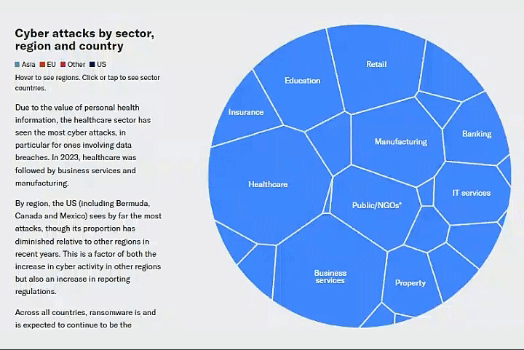
For these ten risks, such as cyber illustrated above, we have also brought them to life in an interactive data visualization story, to access this, click here.
These ten risks are designed to challenge, raise debate, call for analysis, and help start conversations on embracing a risk landscape that seems more complex and opaque than in previous times.
We look forward to examining some of these risks at Exceedance, and to building a mindset that is primed and ready to see risk differently.
















